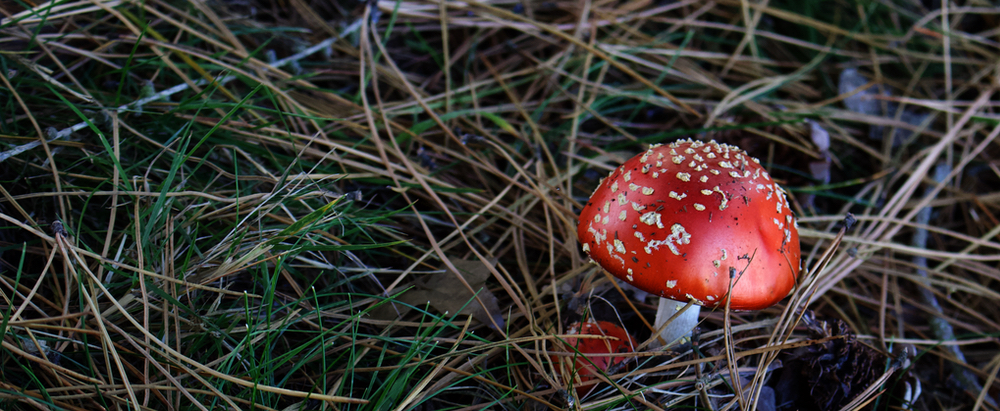
Frost Proofing My Outdoor Citrus Plants With Liquid Frost Cloth
Hello friends,
Autumn is here, and the Autumn equinox has just been, and so with it comes the increased risk of frosts. The earliest frost we've had at our home since I started keeping records was on the 6th of April 2019, which is only 17 days away from today's date. All it takes is one cold front to come through, followed by a cold clear night, and a frost is possible. We've already had a low temperature of 3˚C this month, so there's definitely now a risk to my frost tender plants.

Our citrus plants outgrew their pots in spring last year, so they can no longer sit inside the glasshouse over winter for protection. I planted them in the patio in October 2023, so they now need to be protected from frosts and snow over the coming autumn and winters.
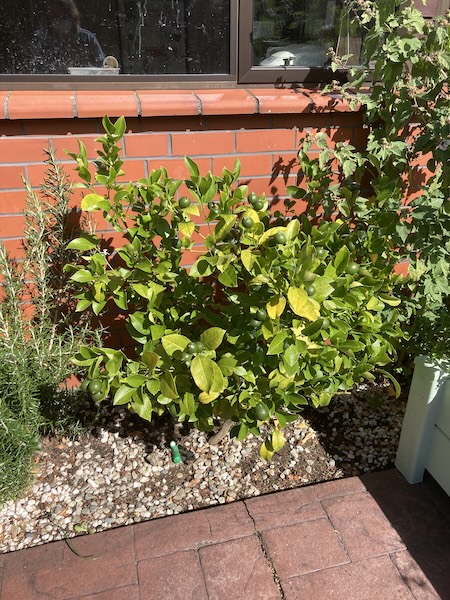
I plan to do this in a number of ways. The first one, which I've just done, is to treat all my citrus plants with liquid frost cloth, which is called Vapor Guard in NZ (you can buy this from garden centers). It protects plants down to -3˚C frosts by forming a protective wax coating over the leaves. Vapor Guard lasts about 6 weeks, as rain and frosts slowly break down the protective wax coating, and then it's time to spray Vapor Guard all over again. I keep a note of the dates I spray in my garden diary, and also calculate the next spraying day six weeks from then.
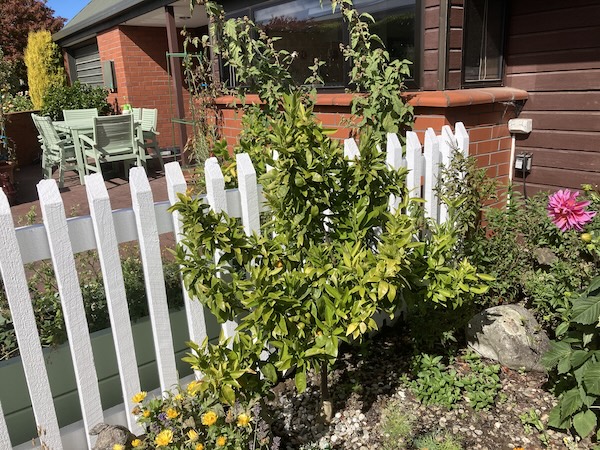
Vapor Guard does not protect the plants below -3˚C, so frost cloth is needed to protect the plants during the colder parts of the year. My plan over the next month is to build wooden frames, and then to attach frost cloth over the top. I'll then move the frames daily into position to protect the citrus plants when needed.
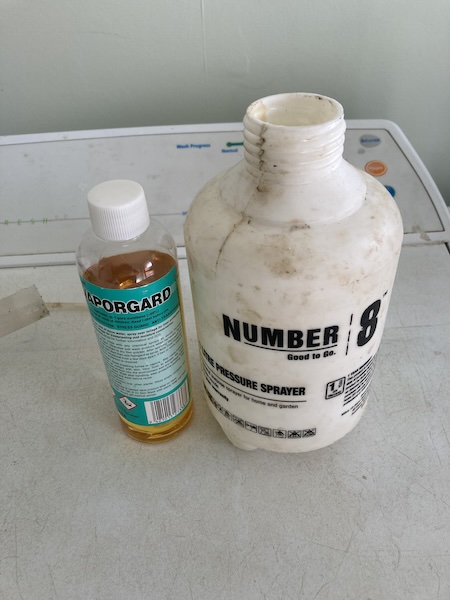
To treat the citrus plants with liquid frost cloth I added 15 mL of Vapor Guard to 1L of luke warm water. After giving it a good mix, I sprayed the liquid frost cloth onto the plant leaves on a dry and warm sunny morning with no wind. I wore gloves and a mask while doing so. The 1L of liquid frost cloth spray was enough to spray my lemon, mandarin, and lime plants, and also enough left over to protect my Camellia sinensis (tea plant) too.
My plants then had the rest of the day to dry, and for the wax to set. They're now protected from frosts for the next 6 weeks, we don't usually get heavy frosts until late May/early June, so I now have time to build the protective frost cloth cages.
I'm relieved to have done this, as the last week has been quite rainy, which meant I couldn't get a window to get this garden job done.
There will be no blog post next week, as hubby and I are having a much needed staycation between Otago Anniversary Day and Easter. Well be relaxing and eating hot cross buns and chocolate, and I hope to make strawberry and raspberry jam as well. I'll post again in early April.
Have a wonderful day
Julie-Ann
Want to discuss my post? Feel free to chat with me on Instagram or Mastodon or Bluesky.
Growing Citrus Plants in Mosgiel
Hello friends,
Some of my favorite fruits of all time to grow are citrus. I love growing lemon, limes, and mandarin bushes, not only for their fruit, which I love using in food and drink all year round, but also for their shiny bright foliage which looks great when the plants are grown in a patio setting.
Back when we lived in Tawa, Wellington, I was able to grow lemon, limes, and mandarin plants outdoors throughout the year in the ground at our hillside home, and only had to protect them from frost for about ten nights each year. When we moved back to Mosgiel, in Dunedin in October 2019, however, I knew I had to make a decision on how to grow my citrus plants. From previous history, I knew that I couldn't just plant them in the ground and leave them to fend for themselves in Dunedin's winters.
The suburb of Mosgiel where we now live is blessed with its own microclimate which is far different from that of the rest of Dunedin, as it lies inland, in a sheltered valley 6 km from the sea. In summer Mosgiel is warmer and sunnier than Dunedin, and in winter is is colder and frostier. I love this about Mosgiel because it is more like Central Otago/the Mediterranean, than the rest of Dunedin, which nearly always get cool sea breezes from either the south-west or the east.
Warm, sunny summers are great for citrus plants, but cold and frosty temperatures in winter, along with the occasional snow, are not, especially when temperatures drop down to -6˚C. So I decided to put my citrus plants into very large plastic terracotta-like pots so that I could shift outside to our patio in late spring, and then bring them into our glasshouse in autumn for protection over the winter months. I also chose to plant the most cold hardy varieties that I could find, to give the plants their best chance at life.
The first citrus plant chosen is the lemon variety Lemon Meyer. It is the hardiest of all lemon varieties, is a heavy cropper, and the juice from the lemon isn't too sour. It was the first citrus plant I planted. It has flourished in it's position in the patio during the summer months, and now bears many fruit each year.
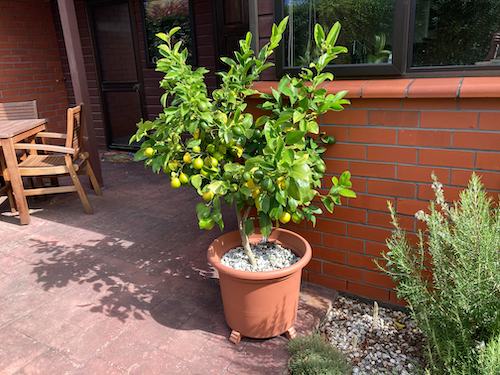
The second citrus plant chosen is the lime variety Tahitian Lime. We mostly use limes in our favorite soup recipe, Tomato, Capsicum and Lime soup, and this variety works perfectly for our needs. As limes do not like the cold at all, we were very surprised to see it growing and flourishing over the last three years. The first year we had two limes, and now each year we are getting dozens of limes off the bush, so many in fact that we are now giving our excess away.
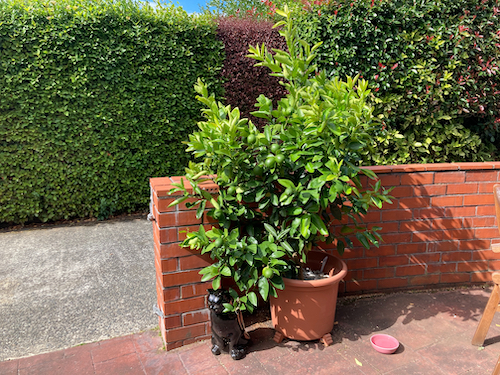
The last citrus plant we chose was the Satuma Mandarin variety. Mandarins are one of my favorite fruits (much easier to peel than oranges), and are the perfect size for snacking on. They went into our last citrus pot, and along with the lemon and lime plants, they grew healthy and strong during it's first and subsequent summers. I am currently awaiting on it's first harvest, hopefully I can eat some soon.
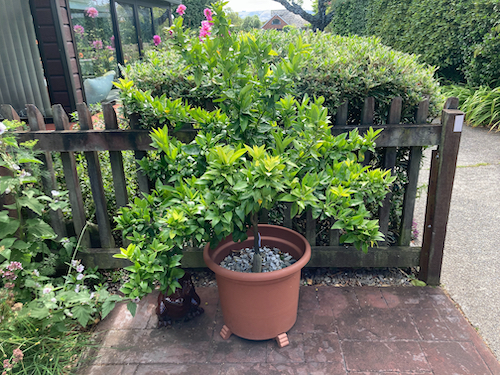
Each year, at the beginning of October, they are moved out of our glasshouse, and into our patio, where we have just enough space for the growing plants. Over the spring and summer they are fed both a monthly and long term fertiliser, and are watered nearly every day to ensure the pots don't dry out. I recently also added Ecowitt Soil Moisture sensors to each pot to keep an eye on their moisture levels, so I know exactly how each plant is faring, and if they need to be watered.
They stay there all summer long until the end of March, and then we drag them back into the glasshouse for the winter.
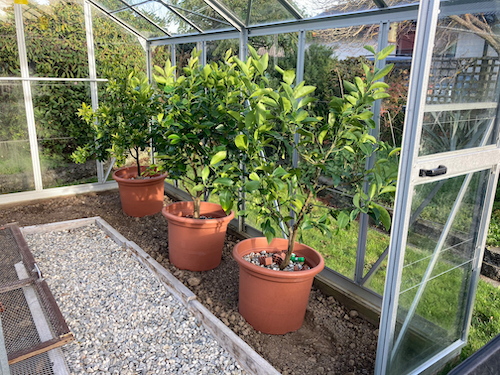
Because of the many cold and frosty days ahead I take a multiple layered approach to keeping them healthy over winter. The first is to keep them safe in the glasshouse over winter, which keeps them safe from high wind damage and protects them from small frosts.
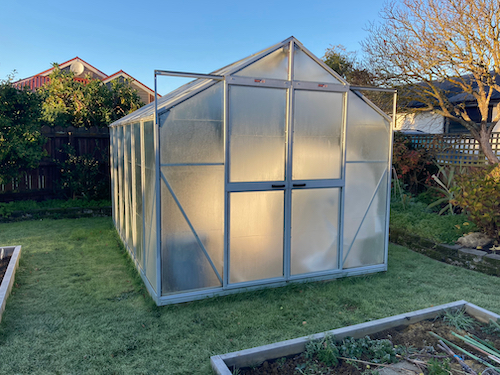
The second layer of protection is the use of Vaporgard Liquid frost cloth. It is an organic wax made from pine resin which helps protects leaves from frost damage down to -3˚C for 2 to 3 months. I usually spray my citrus plants with Vaporgard twice over winter in the glasshouse, and once more when they go outside in early October, since we sometimes get late frosts even up to the end of October. The good thing about Vaporgard is that it can also be used in summer to slow down moisture loss from plants.
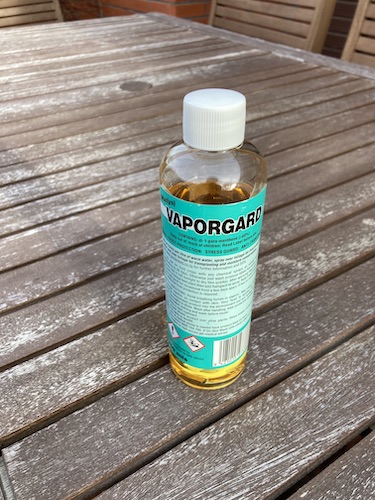
The last layer of frost protection is my ever trusty frost cloth. I have a container full of it which I drag out of the shed each autumn. I usually drape a single layer over the citrus plants on frosty nights, but if I know that a big cold snap with snow, or a prolonged period of frosty weather is about to happen, I double up the frost cloth layers. On frosty mornings I don't unwrap the citrus plants from their frost cloth layers until the glasshouse has defrosted in the sun.
This multilayered approach to frost protection has worked really well with my citrus plants until now, but now I have a problem. My citrus plants have outgrown their pots, and they have gotten too big to transport to and from the glasshouse each winter. I need to find space in the garden for them to grow and flourish, and this means I have to plant them into soil. They are in the glasshouse for the last time this winter, and come this spring, they will be planted into the ground.
This means I am currently undertaking a winter garden project to rearrange the sunniest and warmest part of our garden to fit the citrus plants into this coming spring. And then after this summer and autumn I will be undertaking another project to figure out how to protect the citrus from frosts the next winter after that.

It's a big winter garden project at the moment, but it'll be worth it once the plants are happy, and thriving, and give me much more citrus to eat and drink in the coming years.
Have a wonderful day
Julie-Ann
Want to discuss my post? Feel free to chat with me on Instagram or Mastodon.




